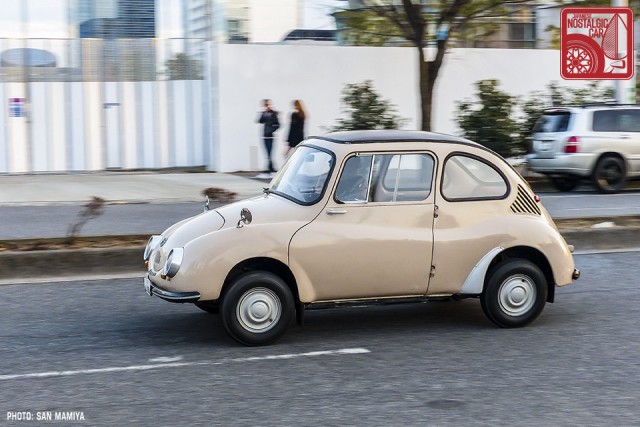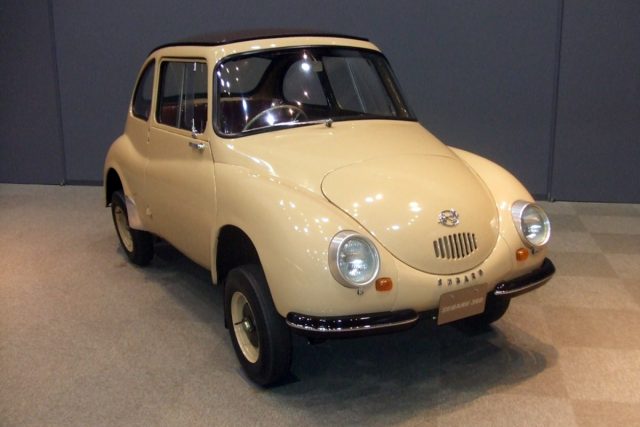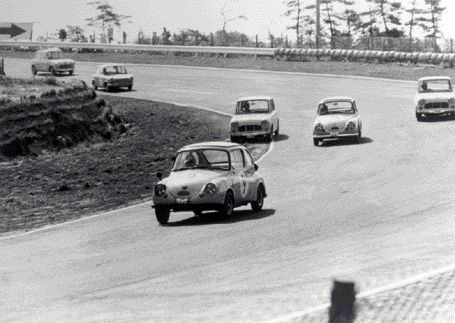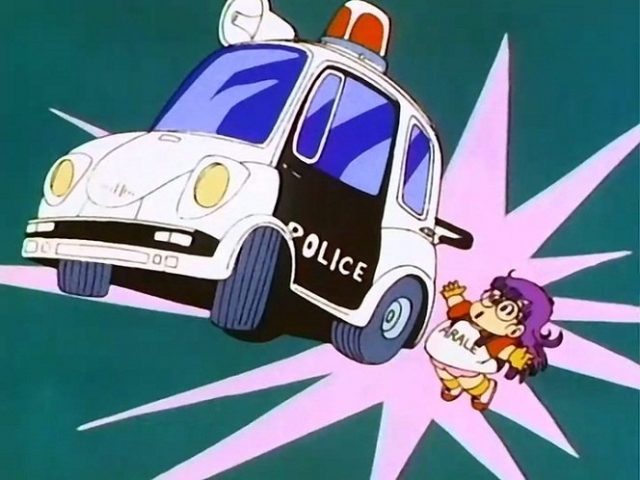
The Japan Society of Mechanical Engineers has certified the Subaru 360 as part of the the nation’s “Mechanical Engineering Heritage.” It is only the second car in the organization’s 119-year history that an automobile has received this honor. So what does it mean, exactly?

It means that the Subaru 360 is a significant part of Japan’s cultural legacy. With the debut of the initial K-111 chassis in 1958, Subaru had built an affordable, enclosed passenger car while most of Japan’s citizenry was still commuting by bike (both the motorized and foot-powered kind).
With an initial 16-horsepower, 360cc, two-stroke twin mounted in the rear, the 360 wasn’t quick, but the car weighed only 385 kg (847 pounds) thanks to a monocoque design — including a fiberglass roof panel — borne from the minds of former Nakajima Aircraft engineers.

It didn’t need to be fast, though. A top speed of 51 mph was plenty to navigate the crowded, narrow streets of late-1950s Japan. Subsequent improvements upped the power to 25 horses and a “performance” twin-carb version called the Young SS bumped output to 36 — and impressive 100 horsepower per liter.
Most importantly, however, was the price. While Japan’s one-percenters drove large Crowns, Princes, or Nissans, a Subaru 360 cost ¥365,000 (we’re not sure what the dollar-to-yen exchange rate was back then, but Malcolm Bricklin imported 360s to the US at $1,297 a pop) and was affordable to masses. More than any car, the Subaru 360 helped put Japan on wheels.

It wasn’t the first kei car, but it was definitely the most successful, spanning a production run of 12 years and 392,000 units. In fact, the iconic shape of the tentoumushi, or “ladybug” as it is affectionately called, is already a sort of shorthand for the golden years of the post-war economic boom and has appeared in a host of movies, anime, and TV shows about the era.
The 360 is also the only passenger car in the Edo-Tokyo Museum, a showcase of the history of Japan’s capital city. So Perhaps it didn’t really need the JSME recognition to enter Japan’s cultural canon, but the honor certainly further cements its rightful place there. Incidentally, that other car to receive a JSME award is the 1947 Tama E4S-47-1 electric car.
Images courtesy of Subaru. Screenshot from Dragonball.






What I find most remarkable about the 360 is its similarity to the Fiat 500. And I don’t imply any plagiarism in that, since the Subaru debuted only a year after the 500, which would be far too little time to churn out any sort of copy. It’s possibly the best example of automotive “convergent evolution” I can think of, in that two manufacturers came up with surprisingly similar cars at more or less the same time, despite being on opposite sides of the globe.
You could *possibly* level some visual similarity and inspiration from the Fiat 600, which had debuted in 1955, but it was certainly an interesting time for tiny cars across the world. Lest we forget, the Morris Mini/Austin Seven debuted in 1959 and bubble cars like the Isetta were rolling around Europe throughout the 1950s too.
In another strange convergence, the exchange rate was 360 yen to the US Dollar.
Why such an odd rate? Because the Japanese Yen was then tied to the British Pound Sterling at 1,000 yen to the pound [which at that time was US $2.78]
How did I miss this one?!
The 360 was my top-tier wish list car; no, really! That is, until I tried to cram my 6′-5″ tall skeleton into one a few months ago for the first time, after literally dreaming about getting one for a couple of years. I wasn’t even close to being able to fit in it with my knees crammed against the dash, not being able to even get them under to operate the pedals. The one time in my life that I wish I could be more “normal” height.